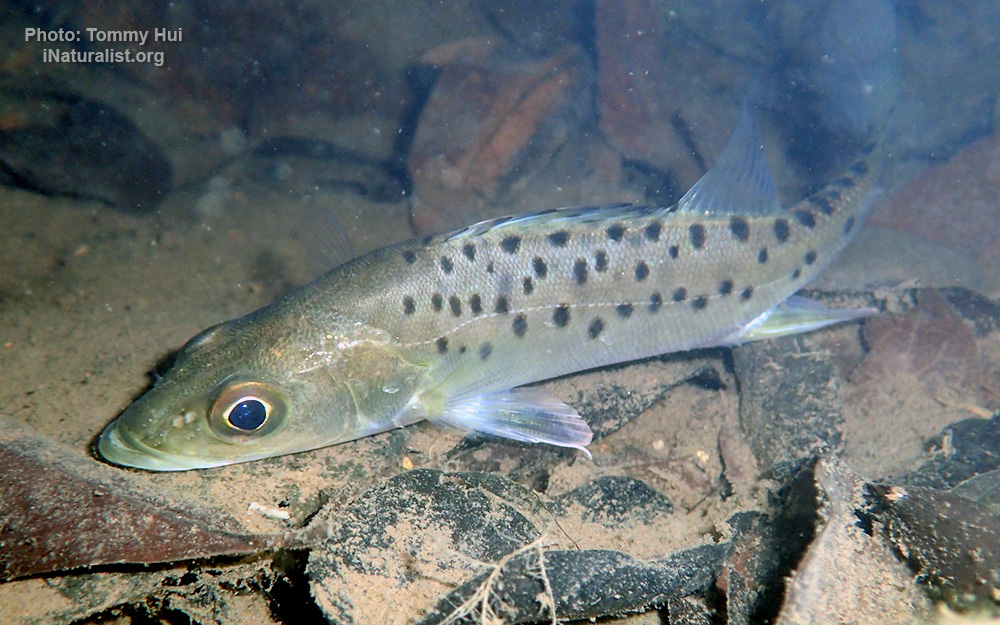Japanese sea bass
(Lateolabrax japonicus)

General data
The Japanese sea bass (Lateolabrax japonicus) is a species of catadromous marine ray-finned fish from the Asian sea bass family Lateolabracidae which is found in the Western Pacific. In Japan this species is known as suzuki.
Description
The Japanese sea bass has a slightly forked tail and a large mouth which has the lower jaw protruding beyond the upper jaw. The young fish have small black spots on the back and dorsal fin which tend to lost in larger fish. Its body has 12 to 15 spines in the first dorsal followed by 12 to 14 soft rays in its second dorsal. The anal fin has 3 spines and 7 to 9 soft rays.
The maximum recorded total length is 102 centimetres (3.35 ft), although the more common standard length is 16 centimetres (6.3 in) and the maximum published weight is 79 kilograms (174 lb).
Distribution
The Japanese sea bass is found in the Western pacific where it occurs from Japan to the South China Sea.
Habitat and biology
The Japanese sea bass occurs on inshore rocky reefs where there is a current. The juveniles have been recorded ascending rivers and then return as adults to sea to spawn. It is a protandrous hermaphrodite in which the fish reach sexual maturity as males at around 2 years old and change into females when they are older. Japanese seabass larvae commence feeding at day 4 after hatching. The diet of the early larvae is exclusively on smaller zooplankton such as cyclopoids and copepods with copepods being the dominant component in their diet, making up nearly 70%. Once they have reached the juvenile stage, its diet includes sardines, anchovies, and shrimp, as well as any other small fishes and crustaceous.











